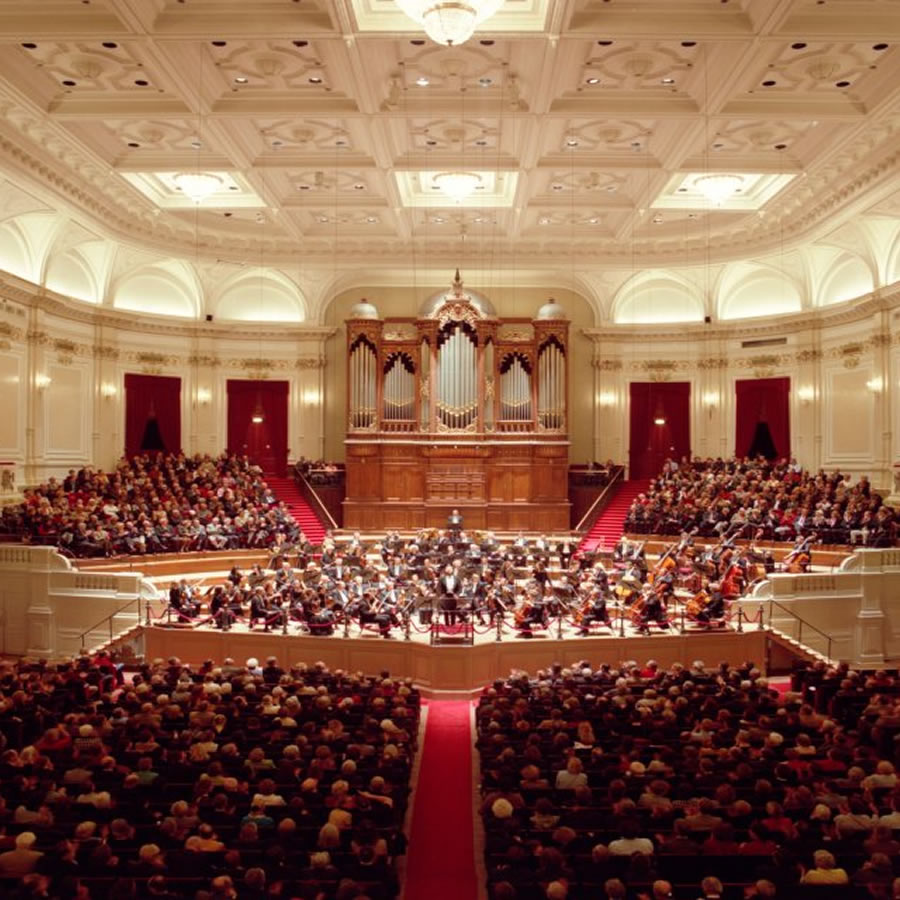EDITOR’S NOTE: This essay is reprinted here with the gracious permission of the author and International Arts Manager, in whose magazine this piece first appeared.
For a venue that is the epitome of quality and class – and famed as an elite institution for classical music – Concertgebouw is all about breaking down barriers.
It’s an ambitious paradox because when it comes to classical music, and the arts in general, the word “elite†is laden with negativity. Yet in a broader sense “elite†can also be representative of top-flight achievements, a resting place for the cream of the crop, a signifier of ambition.
Concertgebouw is an open book on this issue: yes, it is an elite institution when it comes to its world-class programs and splendor, but it has no intention of downplaying its history nor its raison d’etre. Instead, the institution aims to shun elitist doctrine in favor of ushering as many people into its hallowed halls as possible. Once there, regardless of free entry or a high-value ticket, the emphasis is on providing excellent customer experiences. To that end, attending a concert at Concertgebouw is a highfalutin democratic process.
Explains Director Simon Reinink, “Last season we took a year with the management team to think about the strategy: what we came up with was not an entirely new strategy, but one with a stronger emphasis. The title that we chose for this strategy is Sublime.â€
“Our mission is to enrich and connect people with a sublime musical experience – that’s what we do. What this means is that it’s not only the music that should be sublime, but everything about Concertgebouw should be sublime.
“Sublime is now part of everything that we do: from the first contact with the website, which should function well and be very effective, to the way people greet you at the door, the approach of the people who serve you coffee, through to the concert itself and your departure from the concert hall.
“From the very first contact with Concertgebouw to the end, the whole experience should be wonderful. On a scale of one to 10, our customer visitor reviews average 8.5, which is fairly high. As part of this new strategy we said we should try for an average ranking of 9 out of 10. And so we try to measure every point of contact on the customer journey, from the first visit to the website, to the moment they leave the hall, and everything in between. If we can see what people think of us, we can be sublime in every single aspect of what we offer.â€
Sublimity is embedded in Concertgebouw’s brand strategy, continues Reinink: “The most important thing, I think, is that as many people as possible love us. The more people that support us, the more sponsors we will find, the better the occupancy will be in the halls, and the better the sales will be at the counters. So we aim to be as lovable as possible.â€
This approach is immediately obvious when you take a look at Concertgebouw’s content, materials, and offerings. There are dinners in the Mirror Hall, restaurant partners, free concerts, tours, and more. Accessibility is a primary focus: children aged three and over are welcome, there is a wealth of options for hearing- and sight-impaired visitors, and plenty of support for concertgoers with a range of mobility requirements.
“The challenge is to show the world that everyone is welcome at the Concertgebouw and to bring more people through the doors that haven’t visited before – but that would love to come irrespective of their backgrounds. I think at all times we should avoid thinking that we should change our artistic core to attract more audiences – eschewing, for instance, those fusion concerts and crossover concerts that seldom seem to work out well.
“The strategy is more evolution than revolution,†explains Reinink. “In the sense that you need to stick to your artistic calling. Naturally, you can change your programs by adding a little more pop, a little more jazz, a few more family or children’s concerts, but in the end Concertgebouw remains one of the best concert halls on the planet for presenting classical music. That’s what we do well. How this is presented may change per client, but we stick to our artistic core.â€
This approach extends to Concertgebouw’s education offering for you people. Reinink is also a member of the advisory committee of the Nexus Institute – a kind of academic alternative to TEDx, promoting international debate on artistic, philosophical, and cultural themes and European values. To this end, he’s spoken passionately about providing pathways to classical music for schoolchildren.
“Since 2000 we have had an education and outreach program that reaches up to 30,000 children per annum – but there are more than 1.5 million primary schoolchildren in the Netherlands and we’ve been devising a strategy to reach those kids, too.”
As a result Concertgebouw is currently teaming up with various organizations in the country to share its experience and knowledge in order to stimulate music education across the country.
